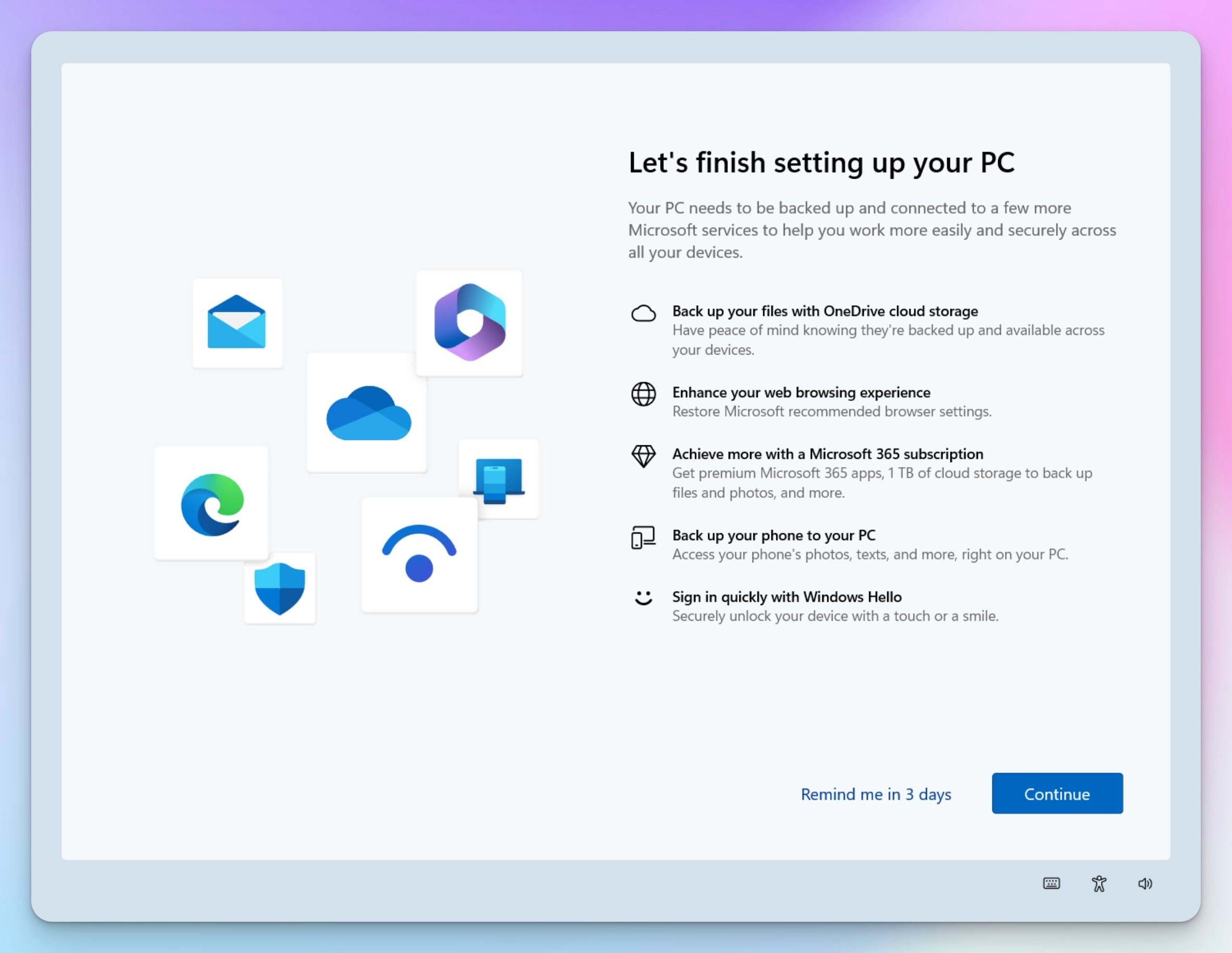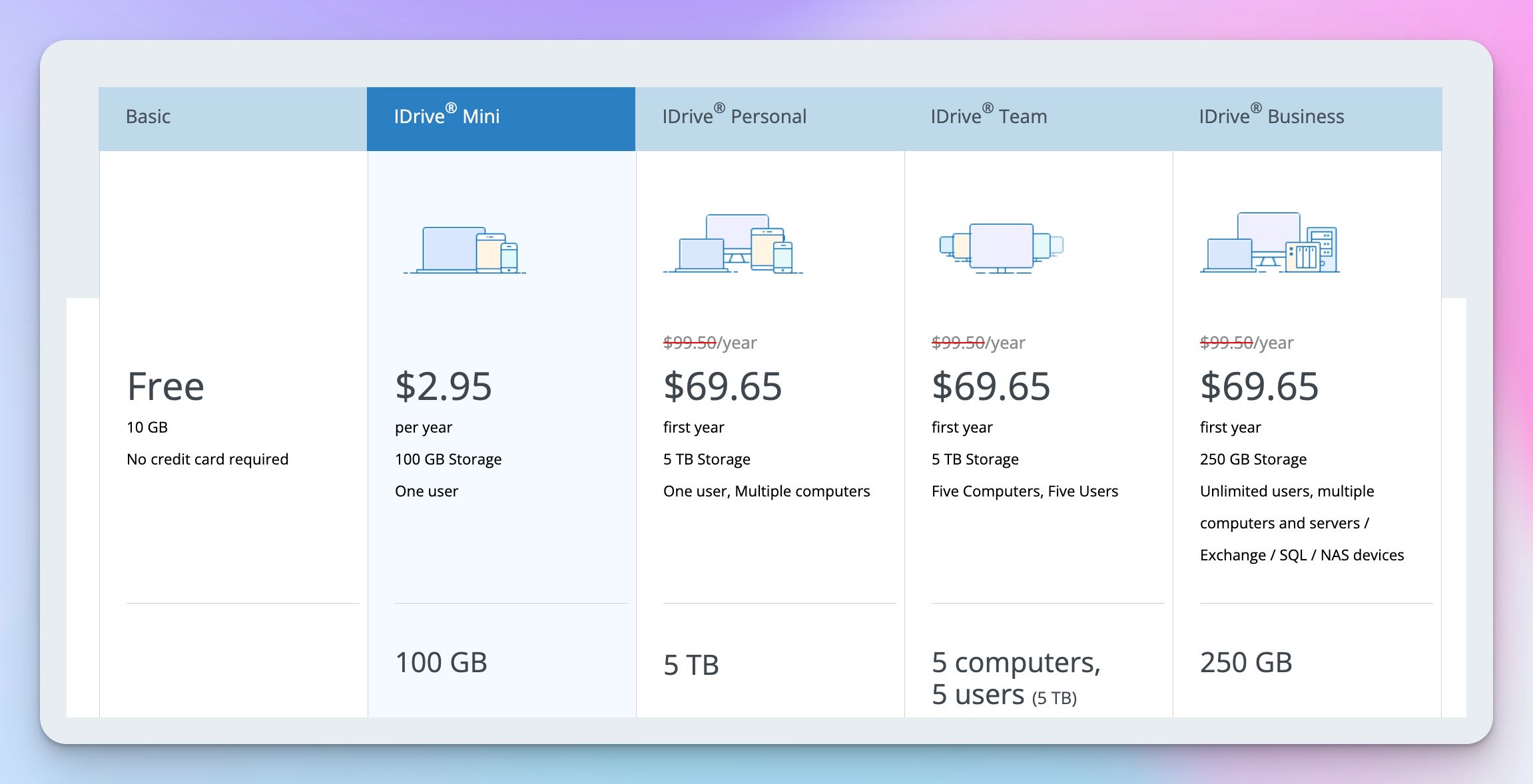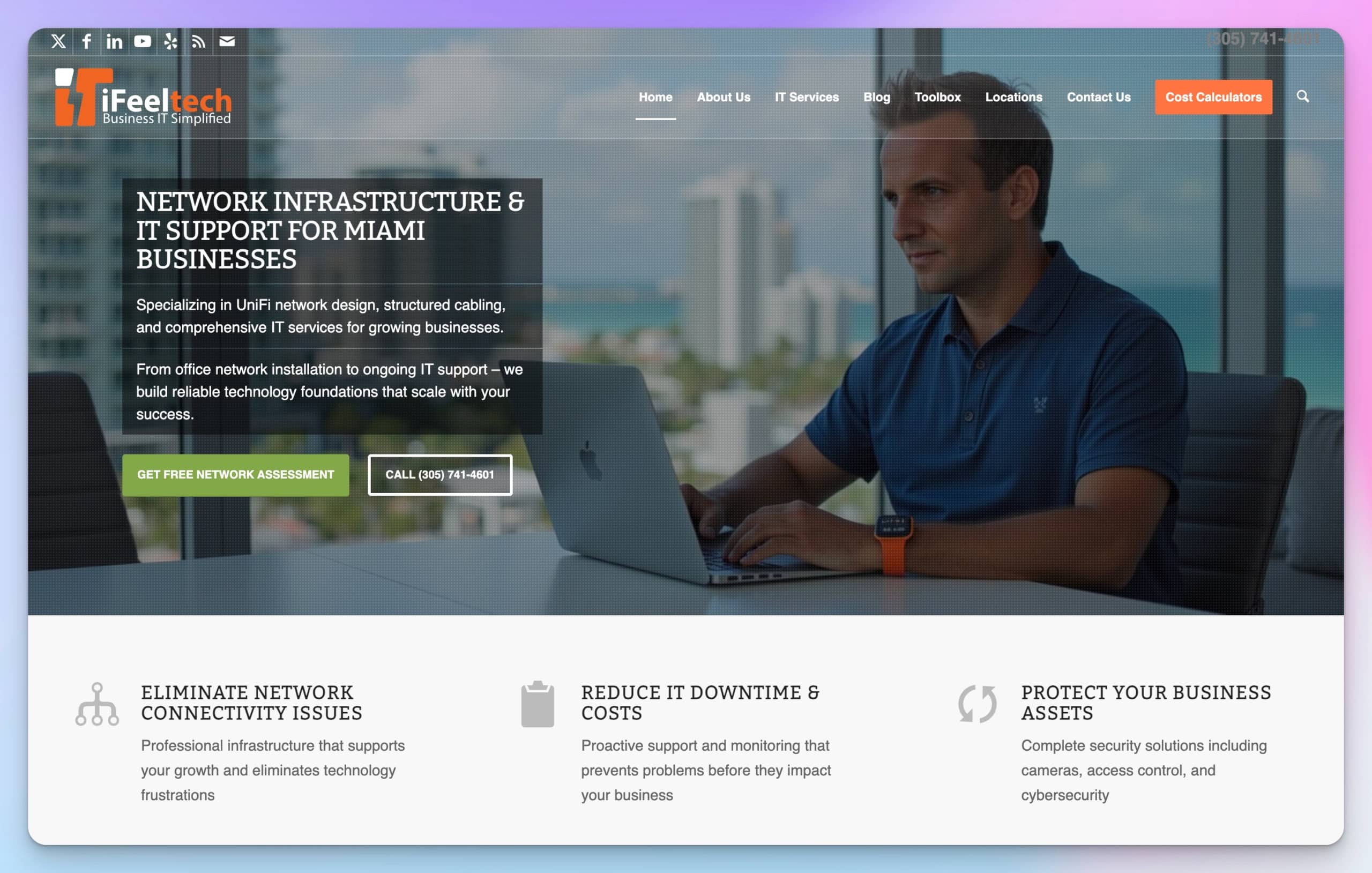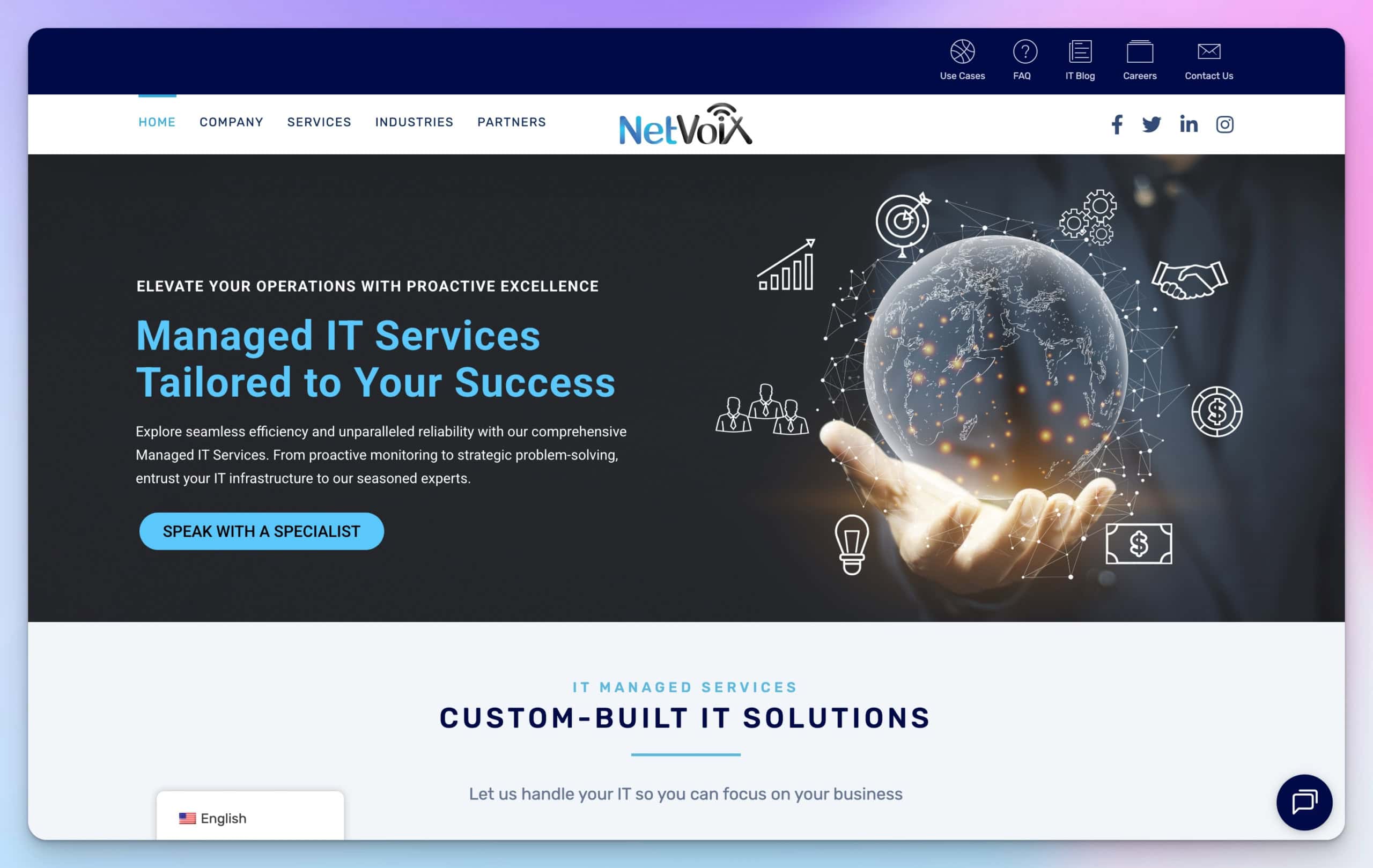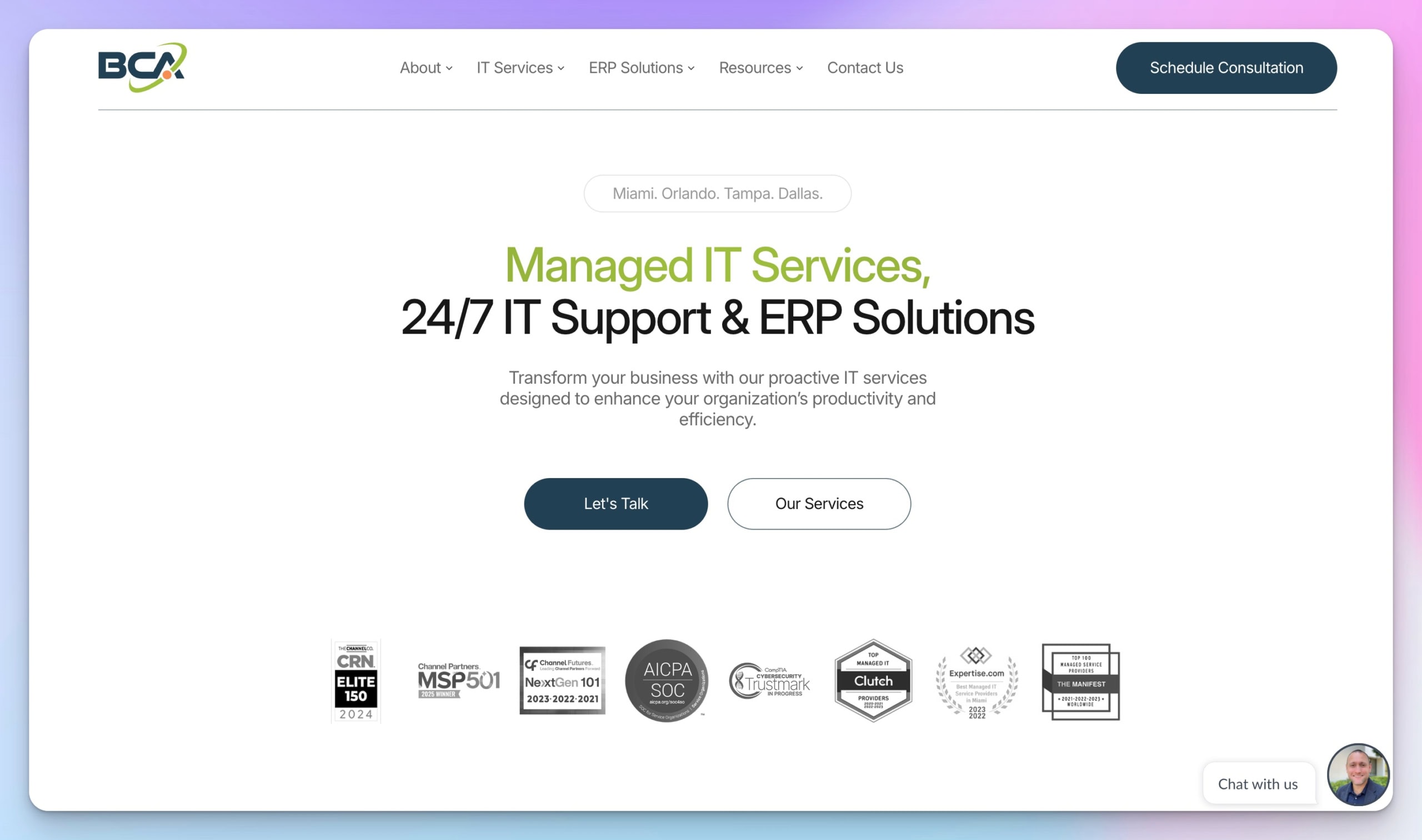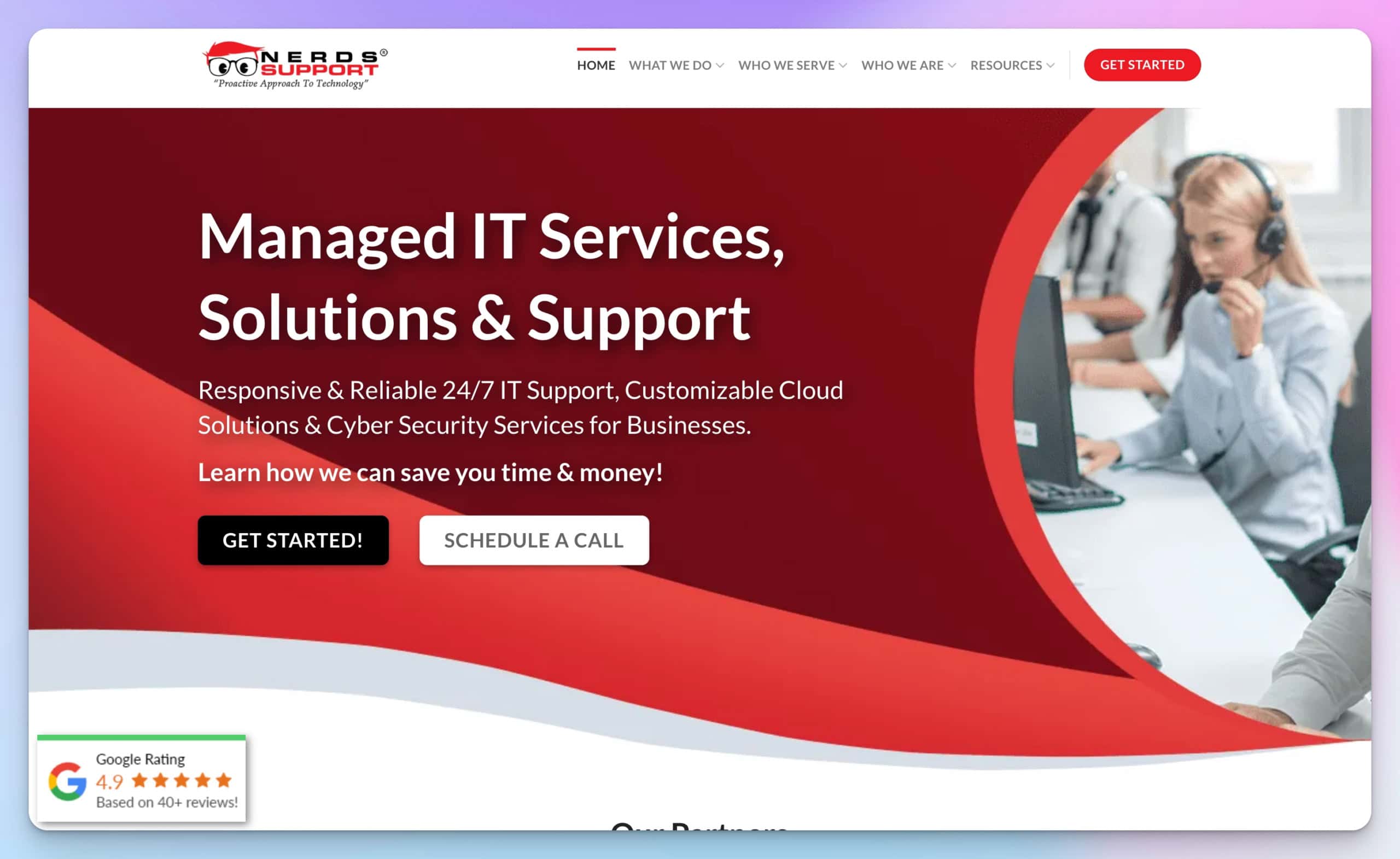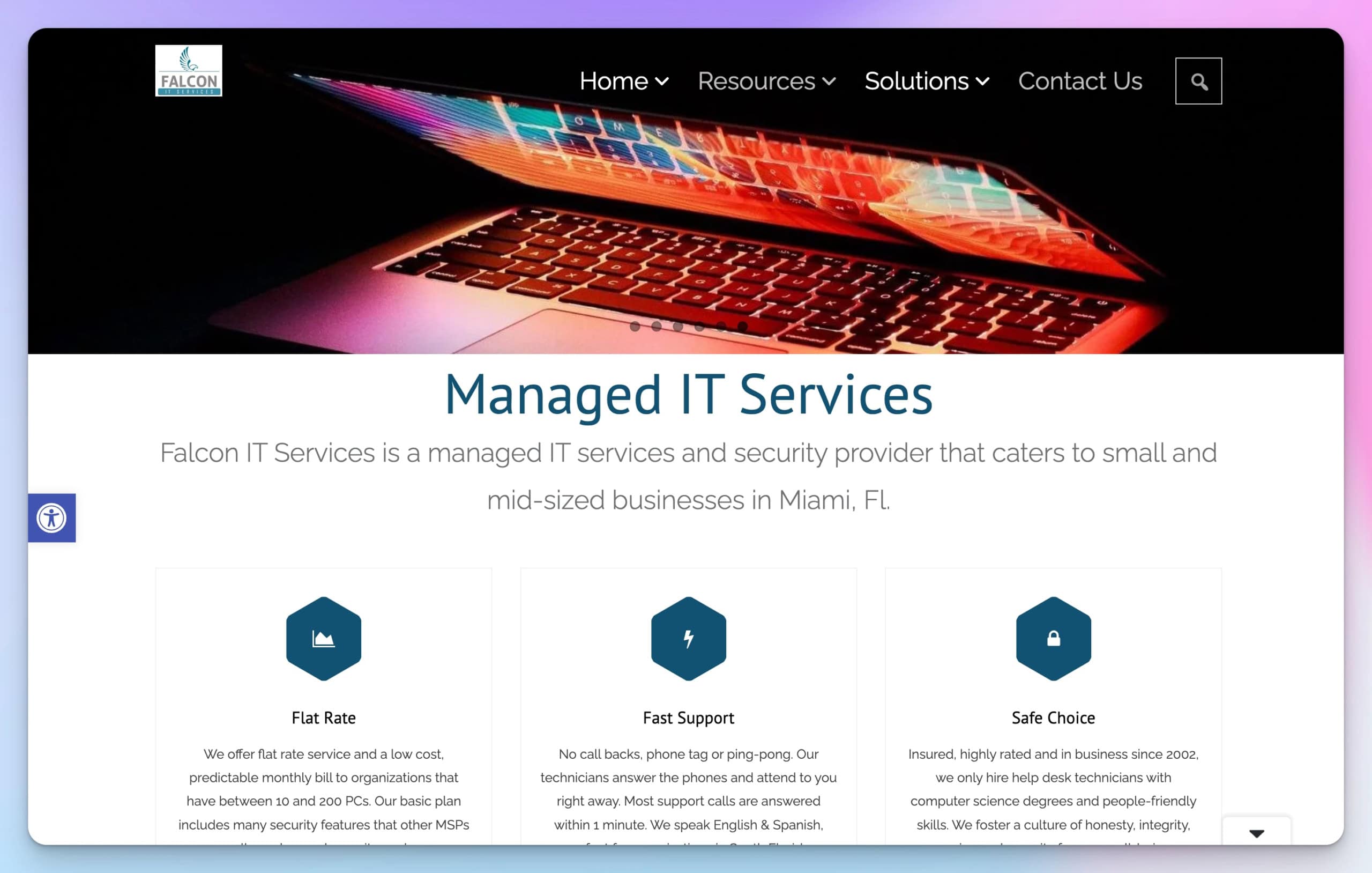Published: October 23, 2025 | Last updated: October 23, 2025
Key Takeaway: Windows 11 Pro works for most small businesses (5-50 employees) and costs $146 per device or $99 to upgrade from Home. Windows 11 Enterprise requires a subscription (approximately $7-12/user/month), needs an existing Pro license, and provides advanced security and management tools that most businesses don't need until they reach 100+ employees or handle highly regulated data.
- Pro is suitable for: Small businesses, professional offices, and companies without dedicated IT staff.
- Enterprise is necessary when You have 100+ employees, operate in regulated industries (healthcare, finance, legal), or need centralized device management across multiple locations.
- Real cost difference: Pro is a one-time purchase; Enterprise adds $84-144 per user annually on top of your existing Pro licenses
Understanding the Windows 11 Business Editions
When setting up or upgrading your business computers, the choice between Windows 11 Pro and Enterprise affects your budget, security, and IT management capabilities. Microsoft doesn't make this decision easy—Enterprise pricing isn't publicly listed, licensing structures are complex, and most comparison guides skip the practical details you actually need.
After deploying both editions for Miami businesses ranging from 5-person law firms to 200-employee manufacturing facilities, we've identified exactly when each edition makes financial and operational sense. This guide breaks down the real differences, actual costs, and practical decision frameworks based on business size and requirements.
If you're still determining whether your organization even needs Pro edition features like BitLocker, Remote Desktop, and domain joining, start with our Windows 11 Home vs Pro comparison to understand the baseline differences between consumer and business editions.
Licensing: How You Actually Purchase Each Edition
Windows 11 Pro: Direct Purchase
Windows 11 Pro is straightforward to acquire through several channels:
Purchase Options
- Pre-installed on new PCs: Most business laptops and desktops come with Pro already activated
- Upgrade from Windows 11 Home: $99 through the Microsoft Store
- New license purchase: $146 per device as a standalone product key
- Free upgrade from Windows 10 Pro: Available for devices meeting hardware requirements
Important: This is a per-device license that stays with the hardware. You pay once and own it.
Windows 11 Enterprise: Subscription Only
Enterprise cannot be purchased as a standalone product. It requires an existing Windows 11 Pro license plus a subscription through one of these programs:
Enterprise E3 Subscription
Cost: Approximately $7-12 per user per month ($84-144 annually)
What you get:
- Windows 11 Enterprise upgrade from Pro
- Advanced security features (Credential Guard, Application Guard)
- Extended support (36 months vs 24 months for Pro)
- Enhanced device management capabilities
- Up to 5 devices per user
Best for: Mid-size businesses (50-500 employees) with moderate IT management needs
Enterprise E5 Subscription
Cost: Varies by volume; typically bundled with Microsoft 365 E5 at approximately $57/user/month
Additional features over E3:
- Microsoft Defender for Endpoint (advanced threat protection)
- Automated incident response
- Advanced analytics and reporting
- Cloud-delivered endpoint security
Best for: Large enterprises or businesses in high-risk industries requiring maximum security
Critical Licensing Requirement
You cannot upgrade directly from Windows 11 Home to Enterprise. You must first install and activate Windows 11 Pro and then add the Enterprise subscription. This means your total cost includes both the Pro license and the Enterprise subscription.
Microsoft 365 Bundles
Many businesses access Enterprise through Microsoft 365 subscriptions that bundle Office apps, cloud services, and Windows:
| Plan | Cost/User/Month | Includes |
|---|---|---|
| Microsoft 365 E3 | $36 | Windows 11 Enterprise E3 + Office apps + 1TB OneDrive + Teams |
| Microsoft 365 E5 | $57 | Windows 11 Enterprise E5 + Office apps + Advanced security + Analytics |
| Microsoft 365 F3 (Frontline) | $8 | Basic productivity tools for frontline workers |
These bundles often provide better value than purchasing Windows Enterprise licenses separately, especially if you need Office applications and cloud services. Organizations should compare the total cost of individual components against bundled offerings.
Feature Comparison: What You Actually Get
Security Features
Both Pro and Enterprise include fundamental security capabilities. Pro provides BitLocker encryption, Windows Defender Antivirus, Windows Hello biometric authentication, and basic firewall protection, which address the security needs of most small and mid-size businesses.
Enterprise adds several advanced security layers. Credential Guard uses virtualization-based security to isolate credentials, protecting against pass-the-hash attacks. Application Guard runs Microsoft Edge in an isolated container, preventing browser-based attacks from affecting the system. Device Guard prevents unauthorized applications from running through code integrity policies.
For businesses needing comprehensive endpoint protection, pairing Windows 11 Pro with dedicated security tools like Malwarebytes Teams or implementing a layered security approach often provides better protection than Enterprise licenses alone.
Management Capabilities
Windows 11 Pro supports domain joining through Active Directory, Group Policy management, and remote desktop connections. These capabilities allow IT administrators to effectively manage networks of 5-50 computers without additional licensing costs.
Pro Management Features
- Join on-premises Active Directory or Azure Active Directory
- Group Policy management for device configuration
- Remote Desktop for IT support
- Windows Update for Business for update management
- Mobile Device Management (MDM) enrollment
Enterprise extends these capabilities with DirectAccess for always-on VPN connectivity, AppLocker for granular application control, and BranchCache for optimizing network bandwidth across distributed locations. Organizations with 100+ employees across multiple offices typically benefit from these advanced management features.
Deployment Options
Pro supports standard deployment methods, including clean installation, in-place upgrades, and basic image deployment. These methods work efficiently for businesses with hardware refresh cycles affecting 5-20 computers annually.
Enterprise provides additional deployment flexibility through Windows To Go (portable workspace), subscription activation (cloud-based licensing), and enhanced Windows Deployment Services. These features matter primarily for organizations managing hundreds of devices or requiring specialized deployment scenarios.
Cost Analysis: Real Total Cost of Ownership
Windows 11 Pro Total Cost
For a 25-employee business:
Year 1 Costs
- Option 1 (New PCs): Windows 11 Pro included with business-class computers ($0 additional licensing cost)
- Option 2 (Upgrades from Windows 10 Pro): Free if hardware meets requirements
- Option 3 (Upgrades from Home): $99 per device × 25 = $2,475
- Option 4 (New licenses): $146 per device × 25 = $3,650
Years 2-5: $0 annual licensing costs
Total 5-year cost: $0-$3,650 (one-time only)
Windows 11 Enterprise E3 Total Cost
For the same 25-employee business:
Year 1 Costs
- Pro licenses: $0-$4,975 (must have Pro first)
- E3 subscription: $10/user/month × 25 × 12 = $3,000 annually
- Year 1 total: $3,000-$7,975
Years 2-5: $3,000 annually
Total 5-year cost: $15,000-$19,975
This analysis reveals the fundamental difference: Pro is a capital expense paid once, while Enterprise is an operational expense paid continuously. Over five years, Enterprise costs 3-4 times more than Pro for the same number of users.
Microsoft 365 E3 Bundle Consideration
For businesses also needing Office applications and cloud storage, Microsoft 365 E3 at $36/user/month provides better value than purchasing components separately:
- Windows 11 Enterprise E3 (included)
- Office 365 E3 with desktop applications (included)
- 1TB OneDrive storage per user (included)
- Microsoft Teams (included)
- Advanced security and compliance features (included)
Organizations considering Enterprise should evaluate whether the bundle aligns with their productivity software needs. For comprehensive business software stack planning, Microsoft 365 bundles often simplify licensing and reduce total costs compared to purchasing individual products.
When Pro Is the Right Choice
Windows 11 Pro meets the needs of most small and mid-size businesses. Consider Pro when:
Pro Makes Sense For:
- Company size: 5-50 employees in a single location or 2-3 offices
- IT resources: Part-time IT support, outsourced IT, or owner managing technology
- Industry: Professional services, retail, light manufacturing, creative agencies, consulting
- Security needs: Standard data protection without specialized compliance requirements
- Budget: Need to minimize ongoing software subscription costs
- Management: Basic device management through Group Policy is sufficient
Pro provides domain joining, Group Policy, BitLocker encryption, and remote desktop—the core features businesses actually use daily. Additional advanced Enterprise features often remain unused in organizations without dedicated IT teams to implement and maintain them.
Pro Plus Security Tools Strategy
Many businesses achieve better security outcomes by investing in Pro Plus dedicated security tools rather than paying for Enterprise licenses:
Effective Security Stack with Pro
- Windows 11 Pro: $199 one-time (includes BitLocker, Defender, Windows Hello)
- Endpoint protection: $60-100/user/year (advanced threat detection)
- Password manager: $96/user/year (credential protection)
- Backup solution: $50-120/user/year (data protection)
Total annual cost: $206-316 per user (year 1 includes Pro; subsequent years: $206-316 in security tools only)
This approach often provides better actual security than Enterprise E3 alone, since dedicated security tools receive more frequent updates and offer specialized protection that Enterprise doesn't include. For guidance on building comprehensive security, see our small business cybersecurity software guide.
When Enterprise Is Necessary
Windows 11 Enterprise becomes valuable when specific business requirements exceed Pro's capabilities. Enterprise makes sense when:
Enterprise Is Justified For:
- Company size: 100+ employees across multiple locations requiring centralized management
- IT resources: Dedicated IT team with expertise in advanced Windows management
- Industry requirements: Healthcare (HIPAA), finance (PCI-DSS, SOX), legal (attorney-client privilege protection), or government contracting
- Security mandates: Clients or regulations explicitly require “enterprise-grade” security controls
- Device management: Need centralized control over hundreds of devices with DirectAccess, AppLocker, or advanced Group Policy
- VDI deployment: Planning to implement virtual desktop infrastructure
- LTSC requirement: Specialized devices needing Long-Term Servicing Channel (10-year support with minimal feature updates)
Industry-Specific Considerations
Certain industries benefit more from Enterprise features:
Healthcare Organizations
HIPAA doesn't technically require Enterprise, but many healthcare organizations choose it because:
- Auditors expect “enterprise-grade” security documentation
- Credential Guard provides additional protection for privileged accounts accessing patient records
- AppLocker prevents unauthorized applications from running on systems processing PHI
- Enhanced audit logging demonstrates security diligence during compliance reviews
For comprehensive healthcare security planning, review our security compliance guide.
Financial Services
Banks, investment firms, and financial advisors often need Enterprise for:
- Application Guard to isolate web-based financial applications
- DirectAccess for secure remote access to trading systems
- Advanced Threat Protection integrated with Windows (in E5)
- Regulatory examiner expectations during security audits
Legal Practices
Law firms handling sensitive client data consider Enterprise when:
- Managing attorney laptops across multiple office locations
- Implementing BitLocker Network Unlock for seamless office encryption
- Requiring attorney-client privilege protection through Information Rights Management
- Meeting cybersecurity insurance requirements for “enterprise-grade” controls
Common Enterprise Features Explained
Credential Guard
Credential Guard uses virtualization-based security to isolate user credentials in a protected container separate from the operating system. This prevents credential theft attacks like pass-the-hash and pass-the-ticket, which attackers use to move laterally through networks after initial compromise.
This feature matters when:
- Your network includes privileged accounts (domain admins, service accounts) that attackers target
- Compliance frameworks require hardware-based credential protection
- Previous security incidents involved credential theft
Most small businesses don't face sophisticated adversaries using these attack techniques. Standard Pro security with proper password management and multi-factor authentication provides adequate protection.
DirectAccess
DirectAccess automatically establishes VPN connections whenever devices connect to the internet, providing seamless access to corporate resources without user intervention. Traditional VPNs require users to manually connect, which creates security gaps when employees forget or delay connection.
DirectAccess benefits organizations with:
- 50+ remote workers accessing corporate applications daily
- Always-on management requirements for security updates and monitoring
- Complex network topologies requiring transparent access
Smaller businesses with fewer remote workers typically find traditional VPN solutions or zero-trust network access more cost-effective and easier to manage.
AppLocker
AppLocker provides granular application control, allowing administrators to specify exactly which applications can run on managed devices. This prevents users from installing unauthorized software, reduces malware risk, and ensures compliance with software licensing.
This capability proves valuable for:
- Organizations in regulated industries require strict application control
- Environments where users have local admin rights but need application restrictions
- Companies with specialized workflows requiring only approved software
Standard user accounts (without admin rights) in Windows 11 Pro provide similar protection for most businesses without the complexity of AppLocker.
Windows To Go
Windows To Go allows users to boot Windows from a USB drive, providing a portable corporate environment. Organizations use this for contractors, traveling executives, or temporary workers who need corporate access without company-issued computers.
Few businesses actually implement Windows To Go because:
- Modern alternatives (cloud applications, VDI, remote desktop) provide a better user experience
- USB drive performance limitations reduce productivity
- Security concerns around portable storage devices
Decision Framework by Business Size
1-25 Employees
Recommendation: Windows 11 Pro
At this scale, Pro provides all necessary features. Domain joining, Group Policy, and BitLocker cover security and management needs. Invest saved budget in security tools, backup solutions, and professional IT support rather than Enterprise licenses.
Exception: Healthcare, financial services, or legal practices with strict compliance requirements may choose Enterprise for auditor expectations.
25-50 Employees
Recommendation: Windows 11 Pro (unless specific requirements dictate Enterprise)
Most businesses in this range operate effectively with Pro. Evaluate whether you actually need:
- DirectAccess (or would a standard VPN work?)
- Credential Guard (or are password managers and MFA sufficient?)
- AppLocker (or can you manage with standard user accounts?)
If you can't articulate specific use cases for Enterprise features, stick with Pro. Many businesses in this range later discover they purchased Enterprise but never configured its advanced capabilities.
50-100 Employees
Recommendation: Evaluate carefully based on IT resources and requirements
This is the transition zone where Enterprise starts making sense, but only if:
- You have dedicated IT staff who can implement advanced features
- Your industry requires specific security controls
- You're already using Office 365 and considering Microsoft 365 E3 bundles
Compare total cost of Pro plus security tools versus Microsoft 365 E3 bundles that include Enterprise licenses along with Office and cloud services.
100+ Employees
Recommendation: Windows 11 Enterprise or Microsoft 365 E3
At this scale, centralized management features justify Enterprise costs. DirectAccess, advanced Group Policy, and comprehensive audit logging become valuable for managing distributed workforces.
Most organizations this size benefit from Microsoft 365 E3 bundles that include Windows Enterprise, Office 365, and cloud services in a single subscription.
Windows 11 Pro vs Enterprise Feature Comparison Table
| Feature | Pro | Enterprise |
|---|---|---|
| Basic Features | ||
| BitLocker Encryption | ✓ | ✓ |
| Windows Defender Antivirus | ✓ | ✓ |
| Windows Hello (Biometric Login) | ✓ | ✓ |
| Domain Join | ✓ | ✓ |
| Group Policy Management | ✓ | ✓ |
| Remote Desktop | ✓ | ✓ |
| Advanced Security | ||
| Credential Guard | — | ✓ |
| Application Guard | — | ✓ |
| Device Guard | — | ✓ |
| Management & Deployment | ||
| DirectAccess | — | ✓ |
| AppLocker | — | ✓ |
| BranchCache | — | ✓ |
| Windows To Go | — | ✓ |
| Support & Updates | ||
| Support Duration | 24 months | 36 months |
| LTSC (Long-Term Servicing) | — | ✓ |
| Licensing & Cost | ||
| Pricing Model | One-time purchase | Annual subscription |
| Typical Cost | $146/device | $84-144/user/year |
| Devices Per License | 1 | Up to 5 |
Migration and Implementation Considerations
Hardware Requirements
Both Windows 11 Pro and Enterprise require identical hardware specifications:
- Processor: 1 GHz or faster with 2 or more cores on a compatible 64-bit processor or SoC
- RAM: 4 GB minimum (8 GB recommended for business use)
- Storage: 64 GB or larger storage device
- TPM: TPM version 2.0
- Graphics: DirectX 12 compatible graphics / WDDM 2.x
- Display: >9″ with HD Resolution (720p)
Before purchasing either edition, verify your existing computers meet these requirements using our Windows 11 compatibility checker guide. Businesses with computers more than 5 years old often need hardware refresh planning before Windows 11 migration.
Application Compatibility
Test critical business applications before organization-wide deployment. Both Pro and Enterprise use the same application compatibility layer, so testing on Pro accurately represents Enterprise behavior.
Common compatibility challenges include:
- Legacy line-of-business applications requiring Windows 7 or 8 compatibility modes
- Specialized industry software (CAD, accounting, practice management) with Windows 11 certification status
- Custom in-house applications developed for older Windows versions
- Peripheral devices (printers, scanners, specialized equipment) lacking Windows 11 drivers
For businesses managing complex application environments, see our complete Windows 11 migration planning guide.
Phased Deployment Strategy
Successful Windows 11 deployment follows these phases:
Phase 1: Assessment (2-4 weeks)
- Hardware inventory and compatibility verification
- Application testing on pilot systems
- User training requirements identification
- Budget and timeline development
Phase 2: Pilot Deployment (2-4 weeks)
- Deploy to 5-10 users representing different roles
- Test critical workflows and applications
- Document issues and solutions
- Refine deployment procedures
Phase 3: Staged Rollout (4-8 weeks)
- Deploy to departments or locations incrementally
- Provide on-site support during initial deployment
- Monitor for issues and adjust procedures
- Complete organization-wide deployment
Phase 4: Optimization (Ongoing)
- Configure Group Policy settings
- Optimize security configurations
- Implement automated patch management
- Provide ongoing user training
Frequently Asked Questions
Can I upgrade from Windows 11 Pro to Enterprise later if needed?
Yes. Windows 11 Pro can be upgraded to Enterprise at any time by purchasing an Enterprise E3 or E5 subscription. The upgrade process requires no reinstallation—simply add the Enterprise subscription to your Microsoft account, and the additional features activate automatically. If you later decide Enterprise isn't necessary, canceling the subscription reverts the device to Pro without data loss.
Does Windows 11 Home have any business features?
Windows 11 Home lacks essential business capabilities. It cannot join domains, doesn't include Group Policy management, omits BitLocker encryption, and doesn't support Remote Desktop (only Remote Desktop Client for connecting to other machines). While Home works for sole proprietors and very small businesses, most organizations need Pro's domain joining and centralized management capabilities.
What's the difference between Windows 11 Enterprise E3 and E5?
E3 provides the core Enterprise features: Credential Guard, Application Guard, DirectAccess, AppLocker, and 36-month support. E5 adds Microsoft Defender for Endpoint (advanced threat protection), automated incident response, threat analytics, and advanced compliance features. Most businesses use E3; E5 makes sense for organizations facing sophisticated cyber threats or requiring advanced security analytics.
Are Microsoft 365 bundles worth it compared to standalone Windows licenses?
Microsoft 365 E3 ($36/user/month) bundles Windows 11 Enterprise E3, Office 365 E3, 1TB OneDrive storage, and Teams. If you need Office applications and cloud storage, the bundle provides better value than purchasing components separately. Organizations using only basic productivity tools may find Office 365 Business Premium ($22/user/month) plus Windows 11 Pro more cost-effective.
Can I use Windows 11 Enterprise for virtual desktop infrastructure (VDI)?
Yes. Windows 11 Enterprise includes VDA (Virtual Desktop Access) rights, allowing deployment on virtual machines accessed remotely. Windows 11 Pro does not include VDA rights—each virtual desktop requires a separate Windows 11 Pro license. Organizations planning VDI implementations need Enterprise subscriptions or purchase VDA rights separately.
What is Windows 11 IoT Enterprise, and when do I need it?
IoT Enterprise is designed for specialized devices (industrial equipment, medical devices, digital signage, point-of-sale terminals). It includes LTSC servicing (10 years of support with minimal updates) and licensing for embedded scenarios. Regular Enterprise targets traditional PCs and business users. Unless you're building or deploying specialized equipment, you want regular Enterprise, not IoT Enterprise.
Do I need Enterprise for HIPAA compliance?
No. Windows 11 Pro includes all features necessary for HIPAA compliance (BitLocker encryption, access controls, audit logging). However, healthcare organizations often choose Enterprise because auditors expect “enterprise-grade” security controls, and features like Credential Guard demonstrate defense-in-depth strategies that compliance assessors appreciate. The choice depends more on your auditor's expectations and your organization's security policies than strict technical requirements.
Can I downgrade from Enterprise to Pro if I decide it's not worth it?
Yes. Simply cancel your Enterprise subscription and let it expire. Your devices automatically revert to Pro (assuming you had Pro licenses underneath). You don't lose data or need to reinstall Windows. However, you'll lose access to Enterprise-specific configurations, so document any critical Group Policy settings before downgrading and recreate them in Pro's limited policy environment if needed.
Next Steps: Making Your Decision
Use this decision checklist to determine which Windows 11 edition fits your business:
Choose Windows 11 Pro If:
- Your business has fewer than 50 employees
- You don't operate in a heavily regulated industry
- You have no dedicated IT staff or only part-time IT support
- Basic security features (BitLocker, Windows Defender, domain join) meet your needs
- You want to minimize ongoing software costs
- Your computers aren't running specialized embedded systems
Next action: Purchase business-class computers with Windows 11 Pro pre-installed, or upgrade existing Windows 10 Pro devices for free if hardware-compatible.
Consider Windows 11 Enterprise If:
- Your organization has 100+ employees across multiple locations
- You operate in healthcare, finance, legal, or another regulated industry
- You have a dedicated IT team that can leverage advanced management features
- You need hardware-based credential protection (Credential Guard)
- Remote workers require always-on VPN (DirectAccess)
- You're deploying virtual desktop infrastructure (VDI)
- Auditors or clients expect “enterprise-grade” security certifications
Next action: Contact a Microsoft licensing partner for volume pricing quotes on Enterprise E3 or Microsoft 365 E3 bundles. Request a pilot deployment to verify features meet your requirements before committing to organization-wide licensing.
Don't Buy Enterprise If:
- You're trying to appear more “professional” without needing specific features
- A salesperson recommended it without explaining which features you need
- You don't have IT staff to configure and maintain advanced features
- Your primary concern is security, and you'd be better served by dedicated endpoint protection
- Your budget is already tigh,t and Pro meets your functional requirements
Alternative action: Invest in Windows 11 Pro plus quality security tools (endpoint protection, password manager, backup solution) for comprehensive protection at a lower total cost.
Professional Windows 11 Deployment in Miami
Deciding between Pro and Enterprise is just the first step. Successful Windows 11 deployment requires hardware assessment, application compatibility testing, careful migration planning, and ongoing support—especially for businesses operating in Miami's unique technology landscape.
iFeelTech specializes in Windows 11 deployments for South Florida businesses, providing:
- Hardware compatibility assessment: Verify which computers can be upgraded and which require replacement
- Application testing: Identify compatibility issues before migration impacts productivity
- Licensing consultation: Navigate Microsoft's complex licensing to find the most cost-effective solution
- Migration project management: Plan phased rollouts that minimize business disruption
- Post-deployment support: Resolve issues and optimize configurations after deployment
- Weather-resilient infrastructure: Special considerations for Miami's climate and hurricane preparedness
We offer free initial consultations for Miami businesses considering Windows 11 migration to assess your environment and provide detailed cost estimates. Our experience with both Pro and Enterprise deployments across professional services, healthcare, manufacturing, and retail sectors ensures we understand your industry's specific requirements.
For businesses planning hardware refresh cycles alongside Windows 11 migration, see our comprehensive guides on hardware refresh planning and network infrastructure setup.
Conclusion: The Right Edition for Your Business
Windows 11 Pro effectively serves the vast majority of small and midsize businesses. Its security features, management capabilities, and one-time licensing provide excellent value without ongoing subscription costs. Enterprise adds powerful capabilities that matter primarily for large organizations, regulated industries, or specialized deployment scenarios.
The decision ultimately comes down to three factors: business size, industry requirements, and IT resources. Businesses with fewer than 50 employees rarely need Enterprise unless they operate in regulated sectors. Organizations with 50 to 100 employees should evaluate whether centralized management features justify the subscription cost. Companies with 100 or more employees typically find that Enterprise's advanced capabilities provide operational efficiency that offsets the higher licensing costs.
Regardless of your chosen edition, proper planning and deployment execution matter more than feature differences. Focus on hardware compatibility, application testing, user training, and ongoing support—these factors determine migration success more than whether you chose Pro or Enterprise.
Professional consultation clarifies and prevents costly licensing mistakes for businesses still uncertain which edition fits their needs. The investment in expert guidance typically saves several times its cost by helping you avoid purchasing unnecessary Enterprise licenses or discovering mid-deployment that you needed capabilities only Enterprise provides.
About iFeelTech: We provide managed IT services and technology consulting for small and mid-size businesses throughout Miami-Dade, Broward, and Palm Beach counties. Our team specializes in Windows deployments, network infrastructure, cybersecurity solutions, and ongoing IT support that keeps South Florida businesses running smoothly year-round.
Last updated: October 23, 2025 | This guide reflects current Windows 11 licensing as of October 2025. Microsoft licensing programs and pricing may change. Contact a Microsoft licensing partner for the most current pricing and program details.
